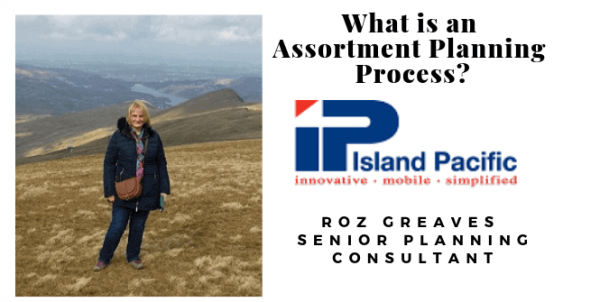What is an assortment planning process?
The importance of Assortment Planning
We know it’s important to create an assortment plan, we merchandisers all love lists and this is really what it is, a shopping list. But how do we get there?
Essentially, the basic assortment process is to group your stores to like stores, and to create a plan of the width and depth of options required for the stores in each of those grades. Simple. Of course, the devil is in the detail.
Get your ducks in a row.
Work backwards to think of all the dependencies each stage has, to ensure you have access to the right information to take you through the process.
· What level do you need to Option plan at? Typically, this is a class/ category level by grade.
· What are you going to base that plan on? Sales? Linear?
· What level of product do you need to grade at? Typically, this is at the same level people option plan at, but it doesn’t have to be, it can be higher.
· What are you going to base the grading on? Sales? Space? Another attribute e.g. customer type? You don’t need to stick to one, is a combination is going to give you a more balanced view of the stores?
· Questions, questions. The answers are going to set your plan of action, the process, and determine the data you need to achieve it all.
The Financial Plan
Firstly, you need a financial plan. This can be the first pass of the Open to buy / WSSI or a separate Pre Season plan. This plan is going to include sales and intake so whatever the approach, you have some key data there already. But, the likelihood is this will be at Total Company Location or maybe Channel. For Grading and Option planning you’ll need Store level data.
· Do you even have a Store plan?
· Is it at the product level you need to split the buy down to?
· Probably not. It’s not usual to split a Store plan down to a low product level.
· It may be a different team who creates this plan, maybe Finance or Retail ops.
· Whatever, don’t panic!
System versus Spreadsheet
This is where the beauty of using a system comes in, working in spreadsheets will be more painful! If you have a Product plan at the relevant level, but a Location plan at a higher level, these plans should be able to be ‘crossed’ i.e. meshed together to create a store plan at a lower level of product. If you have an Open to Buy / WSSI and a Location plan which have been reconciled at the points they meet then all the better, if not, as the cross is all about the relative performance of stores, typically historic, make sure the ‘master’ is the Open to Buy Plan / WSSI, so your overall buy is correct.
If you’re grading and option planning to sales only, breaking down the sales may suffice. If you’re option planning to intake, break the intake down here by store too.
If you intend to use linear to grade stores and /or option plan, this is an ideal place to work on that linear. However, if you want to grade using space but not to individual class linear, consider using a generic space attribute e.g. extra-large, large etc. These of course need to be available to use wherever you are carrying out your grading.
Time Considerations
Finally, is one Assortment plan going to be relevant for an entire season or does it need to be broken down into trading blocks or phases? Think about what the best way is to break down the season. Not every product area needs to be broken down in the same way, but try to avoid having too many variations, keep it simple so a block means something to everyone in the team and roll up mean something to everyone.
Ok so you should now be all set. The stores are grouped into meaningful groups, and all stores in a grade can be sent the same range of product, in the same initial depth, you know which weeks/months in the season make meaningful phases to plan to, you can create your option plans. Now you know how many options stores in each grade, in what depth, you have the shopping list, the Assortment Plan.
About Roz Greaves
For over 20 years Roz has worked at Merchandise Head / Controller across many different retailers she now uses that deep retail expertise to assist in her current role as Senior planning consultant at Island Pacific, where she has worked for over 9 years working with many retail global brands consulting and implementing the Island Pacific SmartPlanning suite such as Superdry, All Saints Altar’d State, Dune Group and Primark. Roz brings both practical application retail acumen to any project she is involved in.
Find out more about the key benefits of Island Pacific’s own Assortment Planning tool today.

